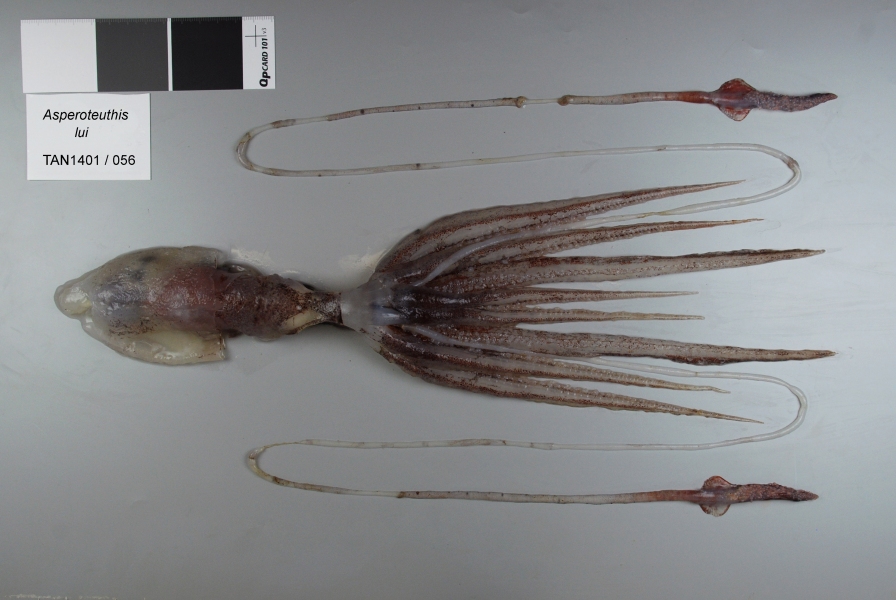This week we introduce to you a rare species of squid and we are excited to have Heather Braid, a postgraduate student studying Nototodarus population genetics for her PhD at the Auckland University of Technology, to guest write about this species for you.
Very little is known about Asperoteuthis lui (or even this family, Chiroteuthidae). In fact, only one individual was known at the time this species was described, and it was half-eaten and found in the stomach of a ling (1). So when this squid came out of the net on the RV Tangaroa during a fisheries voyage to the Chatham rise in January this year it was very exciting!
This is a deep-sea species that was originally found in Cook Straight, but is now known from around New Zealand. Squids in this genus are eaten by sperm whales (2), blue sharks (3), and albatross (4).
This species grows to be about a meter in length from the end of the fins to the end of the arms. The skin on the body is covered in tiny depressions, like a golf ball. It has some very strange features like the light organs on the eyeballs, two sets of very large fins (most squid only have one set), extremely long tentacles speckled with light organs, and the tentacle club is surrounded by a frilly edge. No one knows what this squid eats, but it is possible that it uses the frilly edge to swim the tentacles like another species in this family, Grimalditeuthis (5). 1. TolWeb for Asperoteuthis lui:
http://tolweb.org/Asperoteuthis_lui/112030
2. Clarke, M. R. (1980). Cephalopoda in the diet of sperm whales of the southern hemisphere and their bearing on sperm whale biology (Vol. 37). University Press. 3. Kubodera, T., Watanabe, H., & Ichii, T. (2007). Feeding habits of the blue shark, Prionace glauca, and salmon shark, Lamna ditropis, in the transition region of the Western North Pacific. Reviews in fish biology and fisheries, 17(2-3), 111-124. 4. Cherel, Y., Weimerskirch, H., & Trouvé, C. (2002). Dietary evidence for spatial foraging segregation in sympatric albatrosses (Diomedea spp.) rearing chicks at Iles Nuageuses, Kerguelen. Marine Biology, 141(6), 1117-1129. 5. Video of Grimalditeuthis tentacle clubs swimming:
https://www.youtube.com/watch?v=boV-zXhWTAQ

